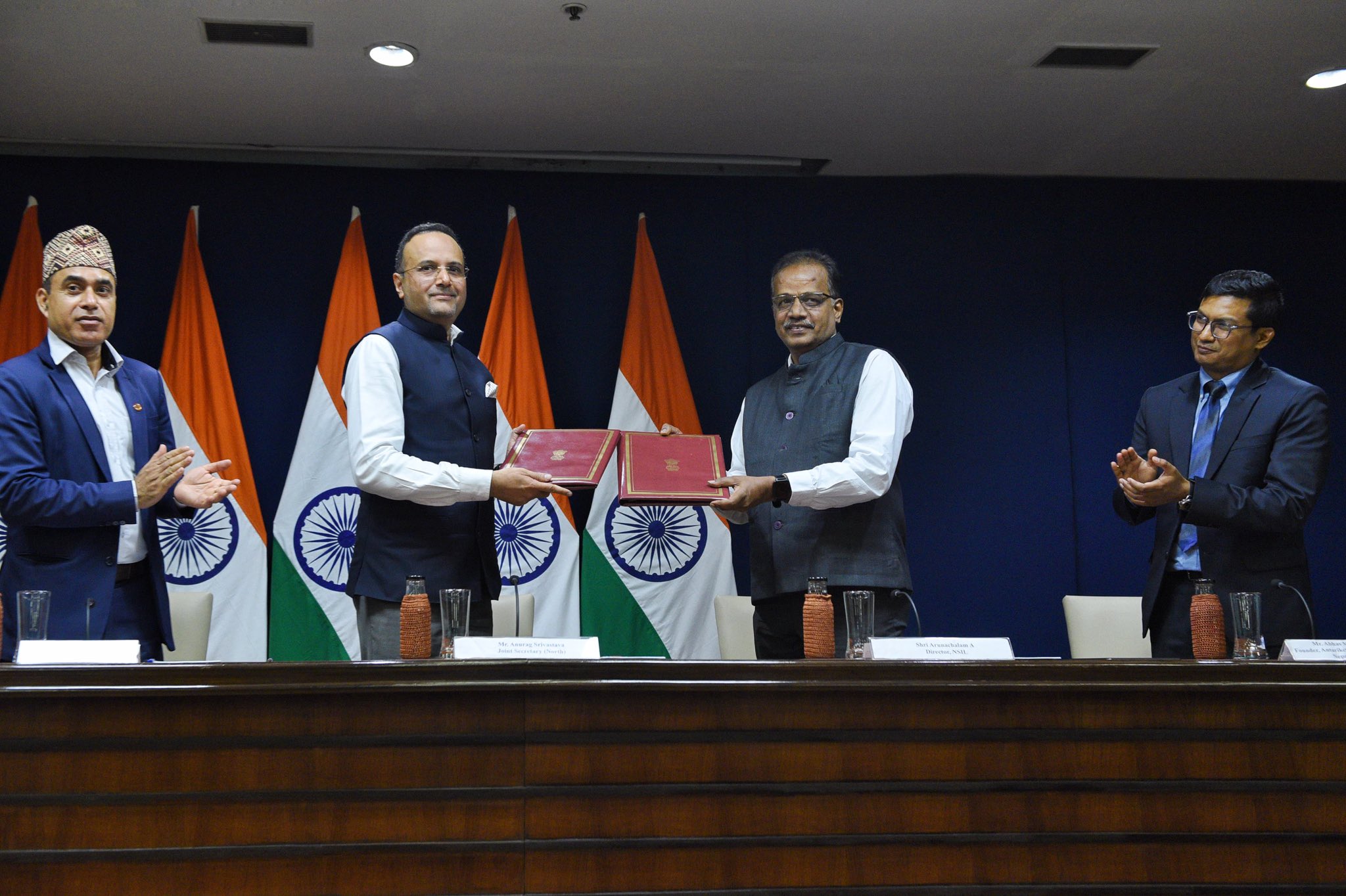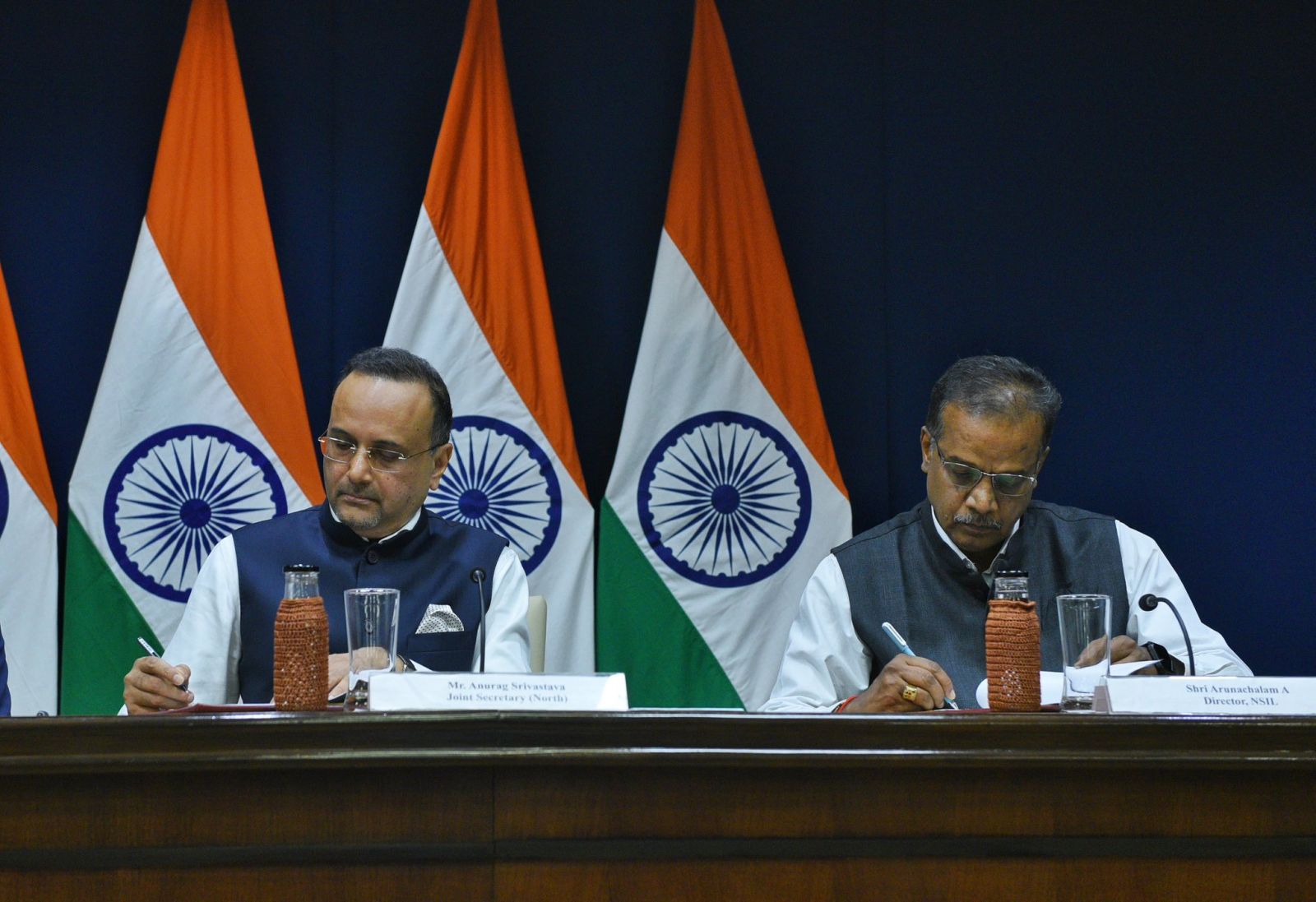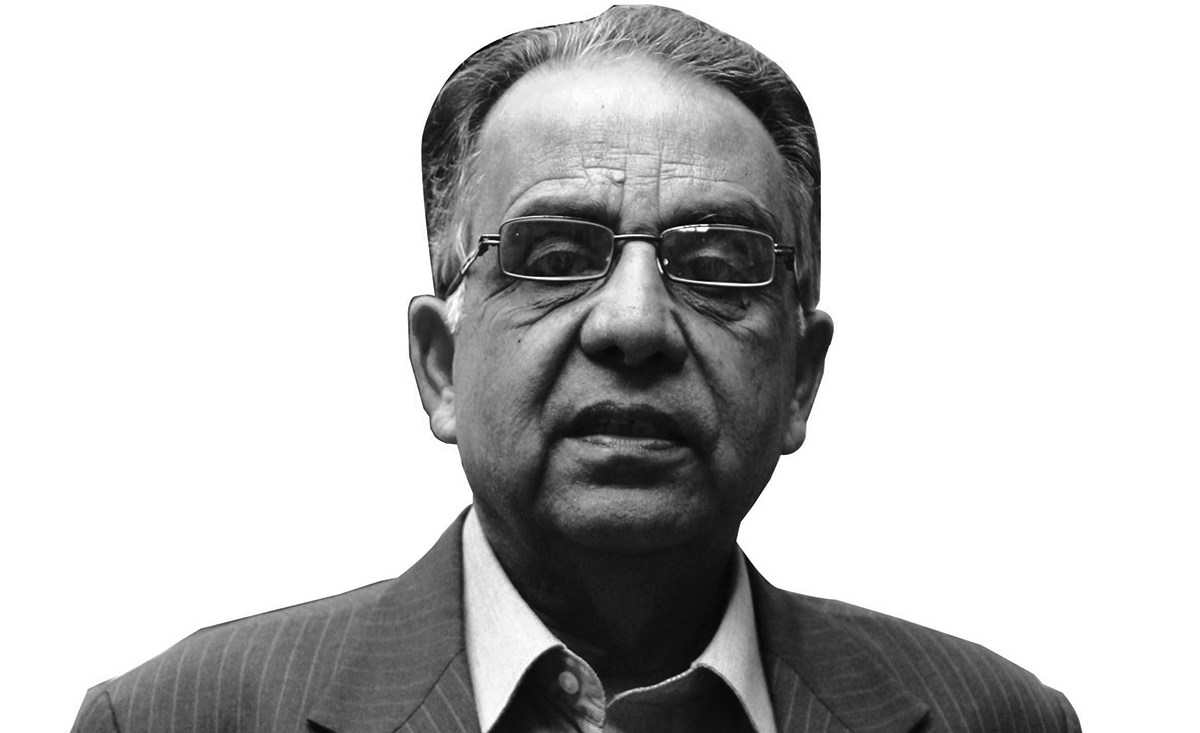India’s External Affairs Ministry, NSL sign MoU to provide assistance for launch of Nepal’s Munal satellite

Kathmandu: Nepal and neighboring country India have signed an agreement for the launch of the Nepal-manufactured 'Munal' satellite. On Saturday, the Indian Ministry of External Affairs and New Space India Limited (NSIL) signed the agreement to provide grant assistance for the launch of the Munal satellite.
Indian Ministry of External Affairs spokesperson Randhir Jaiswal informed that this agreement marks an important milestone in space cooperation between the two countries.
On behalf of the ministry, the agreement was signed by the Joint Secretary of the Indian Ministry of External Affairs in charge of Nepal affairs, Anurag Srivastava, and NSIL Director Arunachalam.
The event was attended by Dr. Ravindra Prasad Dhakal, Secretary of the Nepal Academy of Science and Technology (NAST), Dr. Surendra Thapa, Acting Ambassador of the Nepali Embassy, and Dr. Abhas Maskey, Founder of Space Foundation Nepal (APN).
According to the agreement, the satellite developed in Nepal under the organization of NAST will be launched free of charge using NSIL's Polar Satellite Launch Vehicle.
During the joint commission meeting between Nepal and India on January 3rd, an agreement was reached to launch the satellite developed by Nepal with the support of the Indian government. The agreement was made with the participation of Indian Foreign Minister S. Jaishankar.
A related agreement was also signed between NAST and India's New Space India Limited (NSIL) under the Indian Space Research Organization and Space Department for the launch service of the polar satellite launch vehicle for the Munal satellite.

What is the Munal Mission?
Munal is a satellite developed in Nepal. A Nepalese space startup collaborated with students to design and build the Munal satellite. The primary objective of this satellite is to create a database of vegetation density on Earth's surface.
After undergoing technical testing in Bengaluru, India, the satellite's flight model is expected to be launched into space before the Dashain festival. The satellite is similar in size to NepaliSat-1, measuring 1U, which is equivalent to 10 cubic centimeters, and weighs around one kilogram.
Munal is a more advanced version of NepaliSat. It is equipped with two cameras, including both RGB and infrared imaging capabilities. While NepaliSat-1 had a 0.3-megapixel camera, Munal's camera is 1.3 megapixels. The engineering model of the Munal satellite was developed at the Space Systems Laboratory (SSL) located on the Kathmandu University High School (KUHS) campus.
The Munal satellite is a collaborative effort involving the Nepal Academy of Science and Technology (NAST), Space Foundation Nepal, KUHS, and other governmental and non-governmental organizations. The engineering model of the satellite, considered a complex phase of satellite construction, underwent various tests. Munal has successfully passed the testing phase that simulates the conditions of space.
This two-year project involved students from Kathmandu University High School, Chaitanya Secondary School, Azad Secondary School, and Sanjivani Model Higher Secondary School. The Munal satellite, developed at the Space Systems Laboratory at Kathmandu University High School, is planned to be launched in early 2024 from the Satish Dhawan Space Center, the main space center of the Indian Space Research Organization (ISRO) located in Sriharikota, Andhra Pradesh, India.
Recently, Munal underwent testing at Ananth Technologies in Bengaluru, India, to determine its ability to operate in the space environment. For these tests, engineer Azila Sapkota, and the builders Sushant Dhakal and Shreya Pradhan, traveled to India.
4o


.gif)
.png)









2024-10-01-23-06-38.jpg)


